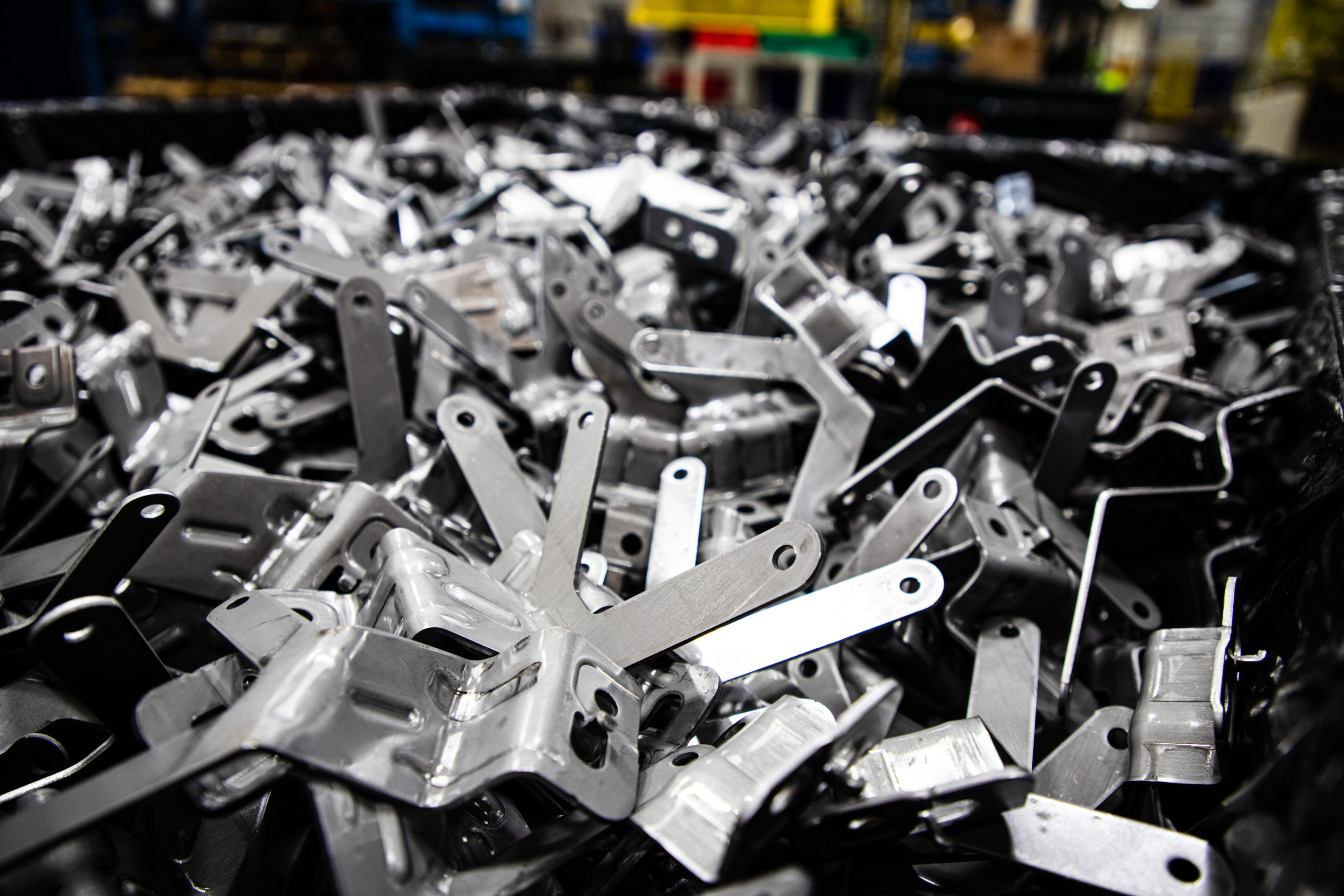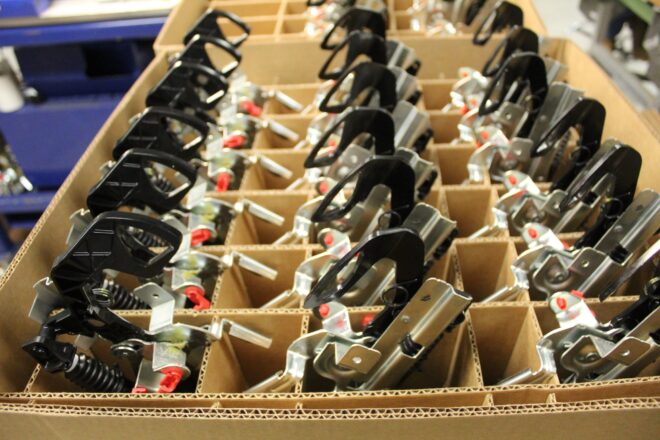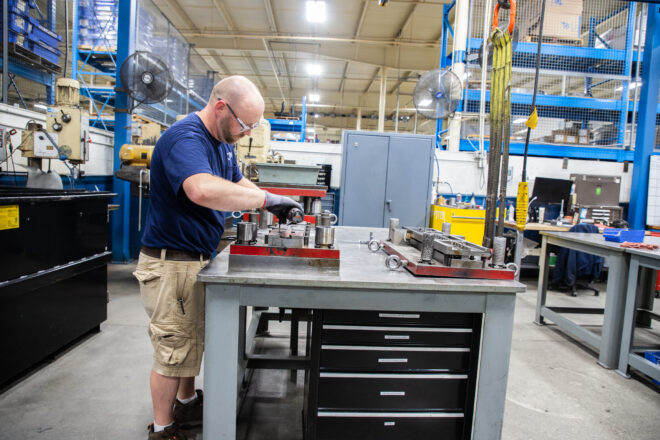What is Metal Stamping
Metal stamping is an essential process in the manufacturing industry as it enables the production of high-quality, precision parts with minimal waste. The process is used to create a wide range of products, including automotive parts, electronic components, medical devices, and household appliances. The ability to produce complex parts with high accuracy and the consistency makes metal stamping a crucial part of modern manufacturing.
The history of metal stamping can be traced back to the early 1800s when the first machine press was invented. This machine used a flywheel to apply force to a punch, which cut and shaped metal sheets into specific shapes. Over time, the process evolved to include more advanced machinery, such as the hydraulic and mechanical press.
Today, metal stamping has become an integral part of the manufacturing industry, with advanced machinery and techniques allowing for the production of complex parts with high precision and efficiency. The process continues to evolve, with new materials, tools, and technologies constantly being developed to improve the quality and speed of production.
Contact Us
Process & Techniques
The metal stamping process involves specialized machinery, including dies and punches, to cut and shape metal sheets into specific shapes and sizes. The process is typically performed on flat sheets of metal fed into a stamping press, where they are cut, bent, or shaped using a series of dies and punches.
Metal stamping is a versatile process that can be performed using various techniques depending on the complexity of the part being produced. Here are some of the most common metal stamping techniques:
Progressive Die Stamping
This technique is commonly used for the high-volume production of parts that require multiple operations to be performed on them. It involves feeding a metal strip through a series of dies that progressively cut, bend, and shape the metal into a finished part. Each die performs a specific operation, which can be automated for high efficiency.
Four-Slide Stamping
This technique uses a four-slide machine to bend and shape metal into complex parts. The machine has four moving slides that work together to create intricate shapes. Four-slide stamping is ideal for producing parts with multiple bends and shapes.
Multi-Slide Tooling
This technique is similar to four-slide stamping but uses a machine with more than four slides. The process is used to create complex parts with multiple bends and shapes. Multi-slide tooling is ideal for the high-volume production of small parts.
Deep Drawing Stamping
This technique uses a punch and dies to draw a flat metal sheet into a three-dimensional shape. The process creates parts with deep recesses or shapes that cannot be achieved through other stamping techniques. Deep drawing stamping is ideal for producing parts with a high depth-to-diameter ratio.
Transfer Die Stamping
This technique involves using a series of dies to transfer the metal sheet from one station to another, each station performing a specific operation. The process is used to create complex parts with tight tolerances. Transfer die stamping is ideal for producing large, complex parts.
Request a Quote
Materials Used In Metal Stamping
Metal stamping can be performed on various materials, including metals, alloys, and composites. The choice of material will depend on the specific requirements of the finished part, including the desired properties, strength, and durability.
Tempered vs. Pre-Tempered Metals
Tempered and pre-tempered metals are two different types of metal alloys used in metal stamping. Tempered metals are heated to a high temperature and then cooled rapidly to create a hardened surface. This process is called quenching, making the metal much stronger and more resistant to wear and tear.
On the other hand, pre-tempered metals have been tempered before they are used in stamping. This means the metal has already undergone quenching and has a hardened surface. As a result, pre-tempered metals are more uniform in their hardness and have more consistent mechanical properties, making them easier to work with during the stamping process.
The choice between tempered and pre-tempered metals depends on the specific requirements of the part or component being produced. For example, pre-tempered metals are often preferred for applications where high precision and uniformity are required. On the other hand, tempered metals are often used in applications where the metal needs to be harder and more wear-resistant.
Tempered Metals:
- Spring Steel (SAE-1050, SAE-1070-75, SAE-1095) Annealed and Pre-Tempered
- Spring steel is a low-alloy, high-carbon steel known for its strength and durability. It is commonly used in metal stamping to produce springs and other parts that require high strength and flexibility. Spring steel can be annealed or pre-tempered to achieve the desired properties for the finished part.
- Cold-Rolled (CRS-1008, CRS 1010) Steel
- Cold-rolled steel is a low-carbon steel commonly used in metal stamping to produce parts with tight tolerances and a good surface finish. It is easy to form and weld and is ideal for producing parts that require strength and durability.
- Brass Metal
- Brass is an alloy of copper and zinc commonly used in metal stamping to produce parts that require corrosion resistance and good conductivity. It is easy to form and flexible, making it ideal for producing complex shapes and parts.
- Beryllium Copper
- Beryllium copper is an alloy of copper and beryllium commonly used in metal stamping to produce parts that require high strength and conductivity. It is ideal for producing parts requiring excellent fatigue and corrosion resistance.
- Stainless Steel 301
- Stainless steel 301 is a high-strength, low-carbon steel commonly used in metal stamping to produce parts that require excellent strength, corrosion resistance, and flexibility. It is ideal for producing parts that require good formability and weldability.
- Stainless Steel 304
- Stainless steel 304 is a low-carbon steel commonly used in metal stamping to produce parts that require good strength, corrosion resistance, and formability. It is ideal for producing parts that require good weldability and high durability.
- Aluminum:
- Aluminum is a lightweight, low-density metal commonly used in metal stamping to produce parts that require good strength, durability, and corrosion resistance. It is ideal for producing parts that require good formability and weldability.
Pre-Tempered Metals:
- Martensite is steel quenched and tempered to achieve the high hardness and strength. It is commonly used in metal stamping to produce parts that require excellent wear resistance and durability.
- Stainless steel, when pre-tempered, is an alloy of steel that has been heat-treated to achieve a specific level of hardness and strength. It is commonly used in metal stamping to produce parts that require strength, corrosion resistance, and durability.
- Brass, when pre-tempered, is an alloy of copper and zinc that has been heat-treated to achieve a specific level of hardness and strength. It is commonly used in metal stamping to produce parts that require good conductivity, corrosion resistance, and durability.
Metal stamping is a versatile and efficient manufacturing process that involves shaping and forming metals into various parts and components. Several types of metal stamping techniques include progressive die stamping, four-slide stamping, multi-slide tooling, deep drawing stamping, and transfer die stamping. Each technique offers its advantages and is suitable for specific applications. The choice of material is also important in metal stamping, with a wide range of metals and alloys available, including pre-tempered metals such as martensite, stainless steel, and brass. Metal stamping is a cost-effective and reliable process widely used in various industries to produce high-quality parts and components.
Need help determining the right stamping process for your application? Contact us to start a conversation with one of our experienced team members or request a quote today.
Advantages of Metal Stamping
Metal stamping offers numerous advantages over other manufacturing processes. The following are some of the most significant advantages of metal stamping:
- Cost-Effectiveness
- Metal stamping is a cost-effective process that allows manufacturers to produce high volumes of parts and components at a low cost per unit. The process involves a high level of automation, reducing labor costs and increasing production efficiency.
- Precision
- Metal stamping is a highly precise manufacturing process that allows manufacturers to produce complex and detailed parts with high accuracy and consistency. The process allows tight tolerances and ensures that each part meets the required specifications.
- Quick Production Turnaround Time
- Metal stamping is a fast and efficient manufacturing process that allows manufacturers to produce large volumes of parts and components in a short amount of time. The high level of automation in the process allows for quick production turnaround times, reducing lead times and increasing production efficiency.
- Versatility
- Metal stamping is a versatile manufacturing process that can produce many parts and components, including simple and complex shapes, thick and thin materials, and various sizes and dimensions. The process can also work with various materials, including steel, aluminum, brass, and copper.
Metal stamping is a highly efficient, cost-effective manufacturing process that offers precise and consistent results. Its quick production turnaround time and versatility make it an essential process for many industries, allowing manufacturers to produce high volumes of parts and components at a low cost per unit.
Challenges with Metal Stamping
Although metal stamping offers many advantages, there are also several challenges that manufacturers face. The following are some of the most common challenges in metal stamping:
- Design Complexity
- Metal stamping can be challenging when producing parts and components with complex shapes and designs. Complex designs can make maintaining the required tolerances difficult and result in production errors.
- Material Selection
- The right material for a specific part or component is critical in metal stamping. Manufacturers must select materials that are compatible with the stamping process as well as the final application of the part. Choosing the wrong material can result in product failure, production errors, and increased costs.
- Maintenance of Machinery
- Metal stamping machinery requires regular maintenance to ensure optimal performance and prevent downtime. Failure to maintain machinery can result in production errors, delays, and increased costs.
- Quality Control
- Quality control is critical in metal stamping to ensure that each part meets the required specifications. Quality control processes must be implemented throughout manufacturing to detect and correct errors or defects.
Overall, metal stamping can be a challenging process that requires careful planning and execution to overcome the challenges that manufacturers face. Design complexity, material selection, maintenance of machinery, and quality control are critical areas that manufacturers must focus on to ensure that the final product meets the required specifications and is delivered on time and within budget.
Why Partner With Apex Spring and Stamping
Apex Spring and Stamping is committed to being a leading manufacturer of metals stampings. By adopting a no-compromise policy on quality and engineering, we ensure customers the most cost effective product for their application. Cost-effective in house methods are used in manufacturing stampings, blanking, bending, drawing, swedging, and chamfering.
Metal stamping is the best cost-effective option for large quantities that require extreme precision and quality. It’s is our goal to provide products with:
- Consistent Quality
- Long-Lasting Capability
- Best Value
Apex has equipment with the following production capacities:
- (20) 45 – 250-ton gap frame presses
- Press bed sizes range from 16.0” x 31.5” (45 ton) to 34.0” x 106.0” (250 ton)
- In die sensing (standard on all tools)
- Inline (die) tapping (reduced processes/handling)
- In die staking (reduced processes/handling)
- Customer-specific designs
- Low to high volume run capabilities
- Material Thickness: .010″ – .250″
- Material Width: .079″ – 18.0″
Apex Currently Manufactures These Products:
- Brackets
- Hinge Plates
- Stop Tabs
- Compression Limiters
- Fasteners
- Speed Nuts
- Tinner type clips
- Automotive Center Console Parts
- Horn Brackets
- Wall System Brackets
- Motion Control Brackets
- Components for lighting and lamps
- Products for decorative stamping
- Components of bearings
- Automobile components
- Controls and components for appliances
As a leader in the production of high-quality stamping products, you can be confident in the products, solutions, services, and value we provide to our customers. It is always our goal to meet and exceed the needs of our customers.
Get the conversation started today!
| Contact Us | Request A Quote |




